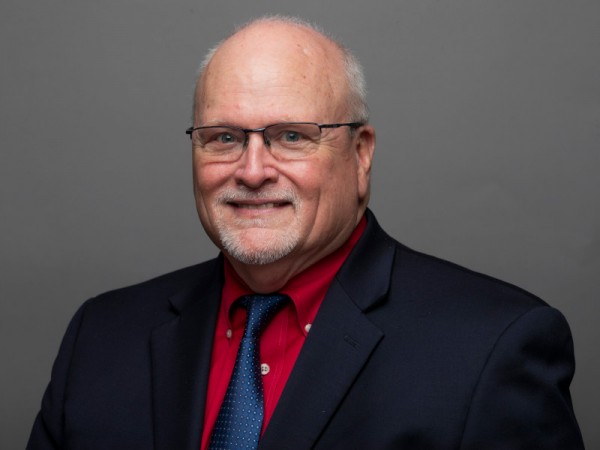For the second time in two years, History Channel hasbroadcast a two-hour special related to the Brenau University’s Dare Stone – a carved rock that either spells out the fate of the settlers of one of the first English colonies in North America or heralds one of the best-orchestrated historical hoaxes ever.
The program, titled Return to Roanoke: Search for the Seven, aired initially in prime time on History Channel Sunday night, March 26, following a one-hour summary of the docudrama on the same subject first broadcast in October 2015. Although the episodes will air periodically on the network in coming weeks, both are available online at http://www.history.com/specials/return-to-roanoke-search-for-the-seven for those with cable access or streaming media access codes. The documentary is also available to rent or purchase on Amazon.com.
Since the late 1500s, the disappearance of 117 colonists from Roanoke Island off the coast of North Carolina has been a baffling mystery. However, in the late 1930s Brenau obtained a carved rock that purported a solution to the case. Supposedly carved by Eleanor Dare, the daughter of the founder of the colony, the information cut into the rock indicated all had been killed by “savages” except for seven who were held as captives at the time of the carving. However, that stone – initially hailed as a great, historically significant find – fell into disrepute after the school paid to acquire more than 40 other carved rocks that now almost certainly have proved to be fakes.
Brenau has done little with the stones since about 1941 other than display them occasionally for visiting scholars, serious journalists and cable television film crews. However, the 2015 History Channel program developed enough information about the first stone that Brenau President Ed Schrader, a geologist, decided to take another look at it.
“From a purely geochemical perspective,” said Schrader, “there are tests available today that were not available just a few years ago, let alone 80 years ago. There is also more historical and archaeological data available – and it is easy to share with scholars across all disciplines. Naturally, we would be thrilled to help uncover that Brenau University owns perhaps the most significant artifact in pre-colonial American history. However, if it is a fake, it is an outstanding, elaborately researched fake, and we could learn a lot about our history and our society in discovering how that came about, too.”
Although Schrader was not involved in the 2015 History Channel program, he was fully engaged in the 2017 program. For example, he carried the stone to a geology lab at the University of North Carolina in Asheville for preliminary sampling and preparation of samples for more detailed chemical and mineral analyses. He made the decision, shown in the film, for a fellow geologist – Dr. Bill Miller of UNC-Asheville – to use a water-cooled, diamond-tip saw to trim off a small piece of rock to take the sample from the original Dare Stone.
That was the first time anyone knew for certain the Dare Stone – always believed to be some kind of quartzite – was almost completely pure white vein quartz. The later laboratory analyses also confirmed it is a vein containing elevated amounts of gold, selenium and, most important, copper. That composition is key to determining the stone’s origin – probably in some area of the Appalachian foothills rich in mineral deposits but certainly not as a Coastal Plain sedimentary rock from North Carolina where the stone first was reported.
“It is very unusual,” Schrader said, “to find elevated concentrations of all three of these metals together in vein quartz unless they occur in a mineralized zone or ore deposit.”
Schrader said that the level of copper in the stone was high enough that it could have originated in an area where Native Americans prior to the 16th century might have recognized the surface outcrops of copper-bearing ores.

(ABOVE: Jim and Bill Viera examine some rocks during the filming of Return to Roanoke: Search for the Seven, a History Channel program, at the University of North Carolina Asheville. Brenau President Ed Schrader took the Dare Stone to undergo scientific testing in order to learn more about its origin. (Courtesy AJ Reynolds/Brenau University)
As in the 2015 program, the principal players in molding the research into a telegenic narrative were Massachusetts stonework experts Jim and Bill Vieira. In addition to working with Schrader, the two for the 2017 program tapped into writings of Capt. John Smith of the Jamestown, Virginia, colony that was established about 20 years after Roanoke.
Smith, whose charter in the colony included looking for the Roanoke settlers, identified and mapped an area in his journals where Native Americans told him they had seen other English settlers. The Vieira brothers then worked with a multispectral satellite imaging specialist who triangulated on areas like those Smith described in his journals with sites that had been identified as possible locations for early copper mining.
They settled on an area in southern Virginia about 60 miles upriver from the site near Edenton, North Carolina, where the first stone is reported to have turned up. The Vieras collected rock samples of quartz outcrops near abandoned 19th century copper prospect pits and sent them to Schrader. The independent laboratory he used for the Dare Stone analyses also evaluated the Virginia samples. The chemical analyses of those samples of vein quartz displayed similar elevated concentrations of the same three elements – gold, selenium and copper – as the original Dare Stone.
Schrader and his long-time colleague George Bey, an anthropology and archeology professor at Millsaps College and an expert in early American civilizations, traveled together to explore the Virginia site. They concluded it was definitely worth a deeper investigation to determine if a pre-Columbian copper mining enterprise could have been still operating at the time of the Roanoke colony.
“I think we have developed some interesting information from an academic perspective,” said Schrader. “But it is just a beginning. We still have a lot of digging to do. First, we need to find out all we can about what we do have in hand, the original Dare Stone.”
Learn more about the Dare Stones at brenau.edu/darestones/.

















